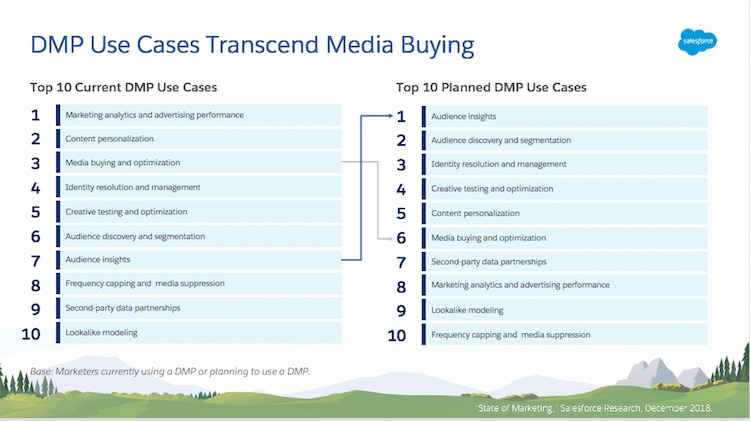DMPs are Evolving to Match Needs of Modern Marketers



Data sets are primarily a way to target consumers, but they’re also rich data assets that should be leveraged for actionable analytics and deep consumer insights.

Paul Cordasco
When the first generation of Data Management Platforms (DMPs) arrived on the digital marketing and media scene a little more than a decade ago their primary use case was employing data to drive targeted advertising on the open web. This was the era when a targeted banner ad on a website was a cutting-edge way to reach consumers. However, as we’ll see, marketers are facing a new set of challenges and finding ways to leverage DMP to address them.
Fast forward to 2019, the world of digital marketing has expanded well beyond targeted banner ads. The media and marketing world has never been more complex for marketers to navigate. Consumers are sorting themselves into more and more niche purchasing and brand categories even as they disperse across an ever-increasing set of media channels such as streaming video, voice, and the Internet of Things (IoT). And necessity is pushing marketers to look to marketing technology, such as their DMP, to make sense of this complex world.
Marketers chart a new course for their DMP’s
The Salesforce State of Marketing Report 2019 asked marketing leaders about their strategies and priorities over the next 12 months and found that 55% of marketing leaders outside of advertising now report using a DMP. Another 35% plan to use one within the next two years. Moreover, marketers ranked “Marketing analytics and advertising performance” and “Content personalization” as their current two leading use cases for DMPs. The most traditional use case “Media buying and optimization” ranked third.
Even more telling, is that marketers’ top five planned DMP use cases don’t mention media buys. Instead, they include “Audience insights,” “Audience discovery and segmentation,” “Identity resolution and management,” and “Creative testing and optimization.”

These findings belie a significant shift in how marketers view the data they collect within their DMPs. While these data sets are primarily a way to target consumers, they are rich data assets that should be leveraged for actionable analytics and deep consumer insights. This effort is of critical importance as the State of Marketing found that companies now often view marketing as the glue holding consumer experiences together.
DMP driven insights can help marketers achieve three critical imperatives:
- Respond to the consumers’ expectations for personalized experiences.
- Help optimize overall marketing efforts by using data to help reach KPIs quicker.
- Manage consumer identity resolution across channels, devices, and engagements.
Like marketing itself, the DMP continues to evolve. In a world that is becoming more data-driven, the enormous data sets held within a marketer’s DMP have more and more uses. Moreover, marketers in 2019 are signaling that they are looking to leverage their data assets in new and more impactful ways.
To learn more about how marketers are leveraging DMPs and other valuable insights about the state of marketing, download Salesforce’s State of Marketing Report or watch our Salesforce’s 5th Annual State of Marketing – Latest Trends to Drive your Business webinar for a deep dive into important trends.























